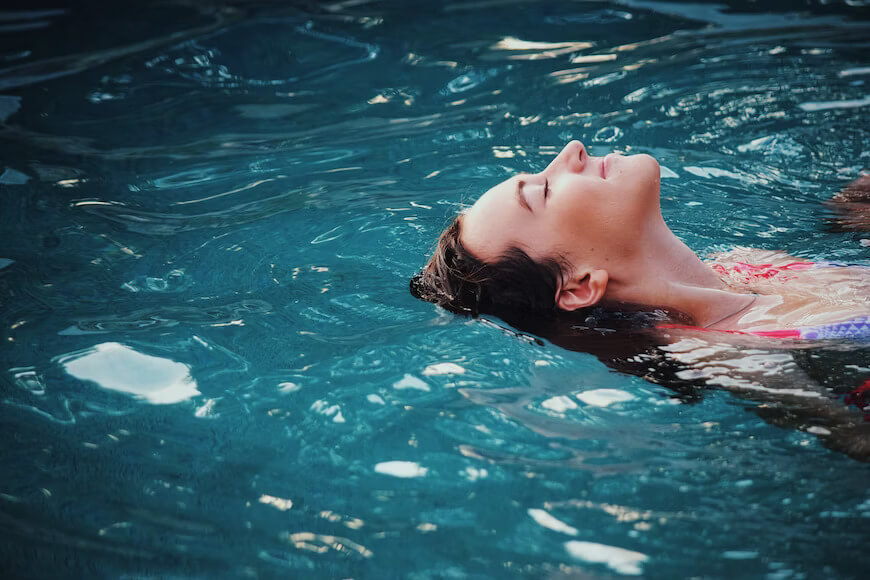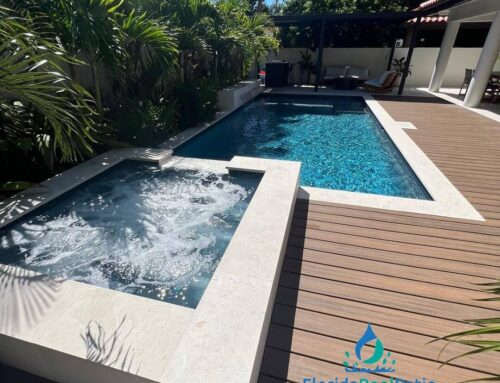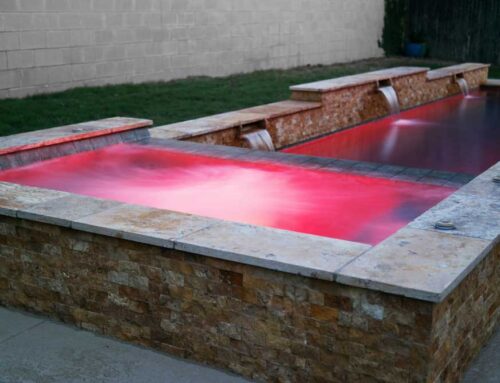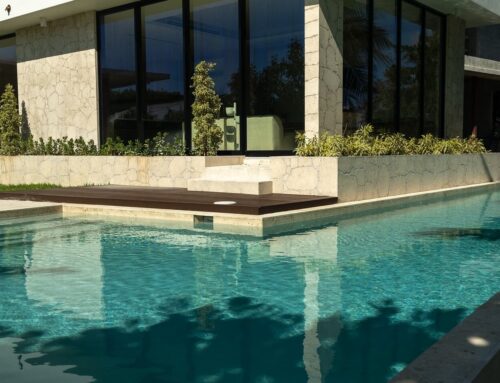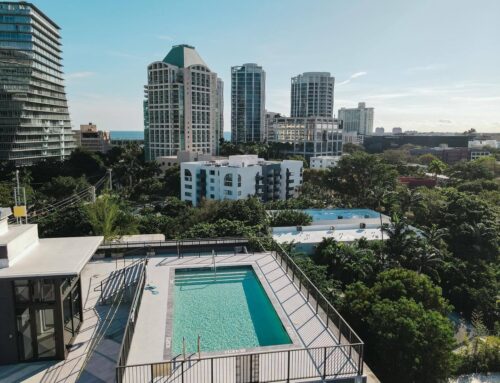You will likely need to shock your pool when you reopen it after winter. It can be difficult to resist jumping into your pool after it has been closed for the winter months. Many pool owners wonder,” How long after shocking pool can you swim?”
What Is a Pool Shock?
Let’s first discuss why you should wait before swimming in the pool after adding chlorine. You may find that your pool contains too many contaminants for a standard sanitizer to handle. Regularly, chloramines from perspiration and urine, cosmetics, leaves, and algae are introduced into the pool. Regular shocks (every one to two weeks) keep these contaminants in check and reduce the strain on your filter and normal sanitization system. The same issues can be present after your pool has been closed for the winter.
Adding shock can help restore the water balance. The process of pool shock uses more than twice the amount of chlorine that is used for regular pool cleaning.
How Long After Shocking Pool Can You Swim
How long should you wait before you start swimming? General guidelines suggest that it is safe to swim in a pool 24 hours after shocking the water. Test your pH and chlorine levels using a chemical testing kit to ensure they are balanced. Make sure that your free chlorine level is at 3 ppm or lower.
If you have a serious algae bloom, you will need to remove all the algae from the pool. The time it takes to remove the algae will vary depending on the severity of the bloom. Your pool professional should be able to assist you with any specific problems. After shocking your swimming pool, the chemical products begin to work hard at eliminating bacteria and other contaminants.
Pool shock involves adding chlorine or other chemicals to the pool water to kill contaminants such as algal blooms and bacteria.
Chlorine Measurements in Pools
In spas and pools, three chlorine measurements are typically monitored: the chloramine level, free chlorine level, and total chlorine content.
Chloramines, also known as combined chlorine or particles of chlorine that have clumped together over time, are one of the measurements.
It’s important not to use excessive chlorine in your pool.
On the other hand, free chlorine is composed of individual chlorine particles that can freely interact with other chemicals and pathogens. It is essential in swimming pools to effectively eliminate potentially harmful pathogens.
Free chlorine has the ability to attach to undesirable particles and convert them into gas. The total chlorine content includes all chloramines present in a pool, along with any free chlorine particles.
How to Choose Between Chlorine and Non-Chlorine-Based Shocks
Pool shocks are based on the chemical content of pools that have already been chlorinated. They are available in a variety of chlorine and non-chlorine products.
Even though pool water can be maintained by regularly adding free chlorine (chloramines), they tend to accumulate over time.
Combination chlorine is one of the main causes of pool shock. At times, adding too much chlorine to swimming pools can have a negative impact on water quality. To reach a breaking point, the free chlorine concentration should be 10 times that of the total chlorine.
In order to reduce the chlorine in your system, you will need to use non-chlorine products.
Can You Swim in a Pool That Has Just Been Shocked?
It is safe to swim in a pool that has just been shocked only if the chlorine level settles between 1-4 ppm. The pH level should also be maintained between 7.1 and 7.3.
You may observe that your instructor adjusts the schedule of private lessons to coincide with safe chlorine levels.
Swimming pools be disinfected through chlorination. Our pool experts will make sure to use recreational waters that have safe water chemistry.
What Happens If You Get into a Pool with Shock?
To shock a swimming pool, you need to raise the chlorine level for proper sanitation and the breakdown of chloramine. This amount of chlorine is necessary to remove potentially harmful substances from the pool, but it can also be harmful to the human body.
Here is a brief explanation of why.
Skin Irritations
A high concentration of chlorine can cause irritation, dehydration, and even burns to the skin. If you already have sensitive skin, excessive chlorination can worsen the issue. In milder cases, an abundance of chlorinated water can lead to dry skin or even a rash.
Eye Problems
Human eyes require constant hydration. When they come into contact with chlorine, your eyes can become irritated, causing a sensation of dryness and discomfort. Shortly after leaving the pool, you may experience severe eye irritation and dryness.
Discoloration of Clothing
While not a serious health concern, it’s something worth considering. If you’re wearing designer swimwear, you might want to avoid swimming in pools with high chlorine levels. Chlorine, which is present in many cleaning products, can potentially alter the vibrant colors of your clothes.
What Happens if You Swim in a Pool With Too Much Chlorine?
The previous section outlined the immediate consequences of swimming in a recently shocked pool. This section will discuss the more severe effects of prolonged exposure to excessive chlorine.
Chlorine Poisoning
Chlorine poisoning can occur when you inhale, swallow, or come into contact with chlorine. It can cause severe reactions on your skin, eyes, and mucous membranes. Additionally, when chlorine reacts with water in your digestive tract and mucous tissues, it can lead to the formation of highly toxic substances such as hypochlorous or hydrochloric acids.
While chlorine poisoning is commonly associated with ingesting household cleaning products, a pool that has been shocked with high levels of chlorine can also be a cause of concern.
Digestive Problems
In addition to chlorine poisoning, you may also experience digestive problems, which can manifest as throat pain, stomach cramps, and aches. Nausea and dizziness may also be present.
Breathing Problems
Chlorine converts water particles into gas, which means that chlorine vapor may accumulate in a pool after it has been shocked. Chlorine in vapor form is just as hazardous as the liquid form, as it can react with the lining of your lungs when you breathe it in. This can cause difficulty breathing.
Chlorine vapor can be particularly problematic for individuals with breathing issues, such as chronic bronchitis or asthma. To ensure safety, it’s essential to know how long you should wait before swimming after a pool shock.
Experience the Power of Pool Shocking with Florida Pool Patio!
Say goodbye to murky waters and welcome a rejuvenated pool that invites you to dive in with confidence. Contact us today to schedule a consultation with our pool shocking experts. Let Florida Pool Patio show you the transformative power of our pool shocking services, ensuring you have a refreshing and enjoyable swimming experience all season long.
Don’t compromise on the health of your pool – trust Florida Pool Patio to deliver outstanding results and keep your pool in pristine condition!
Services We Offer:

